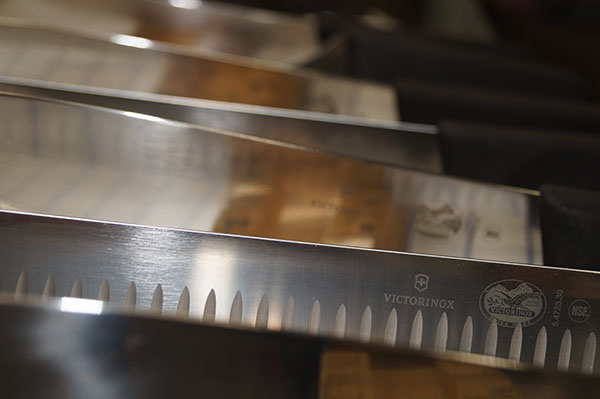SELECTING THE RIGHT KITCHEN KNIVES

Stainless steel or ceramic? German or Japanese blades? Boning, fillet, paring, butcher? Kitchen knives make great holiday gifts but there are almost as many different varieties of kitchen knives as there are kitchens. Here are a few simple things to look for to make selecting the right blade for you an easier task.
- Stainless Steel Vs. Ceramic Knives
Ceramic knives are popular but a quality steel knife is far better than a ceramic knife. Some companies promote ceramic as never needing to be sharpened, however in reality, not only do they dull and chip, but they are impossible to fix or sharpen. Most professional sharpeners will not waste their time on a ceramic knife so once it dulls or chips you are out of luck. - German Vs. Japanese Blades
Should you consider a foreign blade? If you are in the market for a high-end blade, look to the Japanese knives. European and American knives are known as western knives. All have their origins from Germany and France. For the price, the steel is not at the same level of quality as Japanese knives. Japanese knives are usually lighter and are made of higher quality steel and can cost less. - What Style to Look For?
Blade style is determined by the intended use of the knife. You fillet fish with a fillet knife and use a slicer for large cuts of meat. One could easily fill an entire drawer with specialty knives for each type of application. But, if you are looking for an all-round utility knife, start with an 8” or 10” cook’s or ‘chef’s knife.’ If your hand is small, or not as strong as it used to be, lean towards the 8” model. Almost every job in the kitchen can be efficiently tackled with this one utility tool. A pairing and or a 4” utility knife can make small jobs easier. - Consider Handle Shape and Material
Handle shape and material are also important considerations for personal preference and intended use. The shape must be comfortable, even when used for extended periods of time. The material the handle is constructed of is a little more complex. The majority of black smooth handled Western or European knives are made of cheap ABS plastic, the same inexpensive plastic that used to make sewer drain lines — not the stuff that will last decades in your kitchen. They do not hold up to heat or shock. A stabilized wood such as Pakawood or a stronger synthetic like Micarta (phenolic) will hold up to heat and shock and be around for you to hand down to your children. Another style that holds up extremely well is when the blade extends seamlessly into a steel handle. These can even be accidently put through a dishwasher without any concern.

